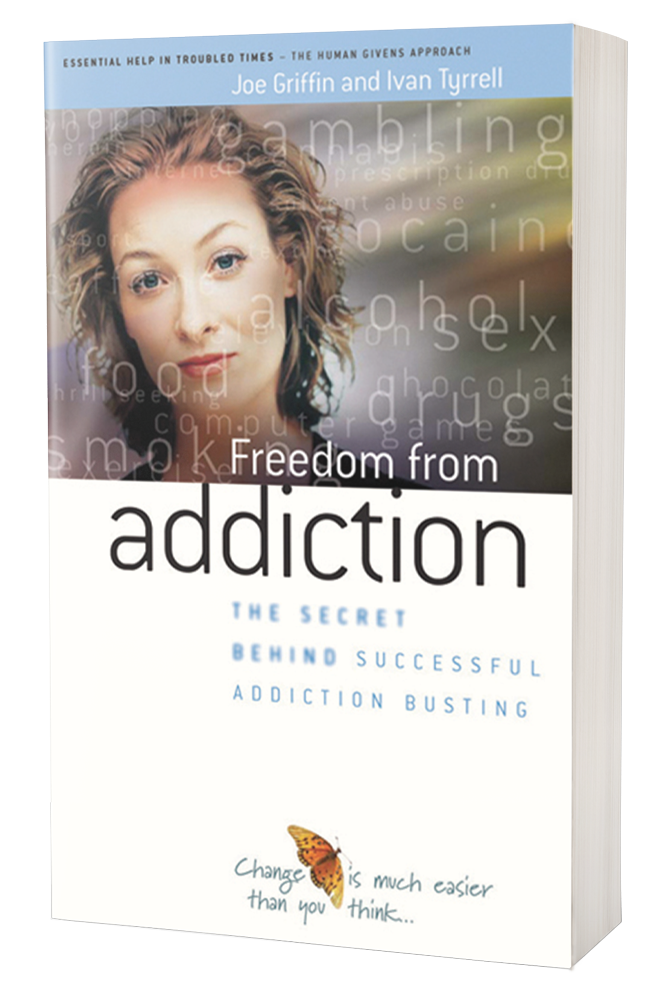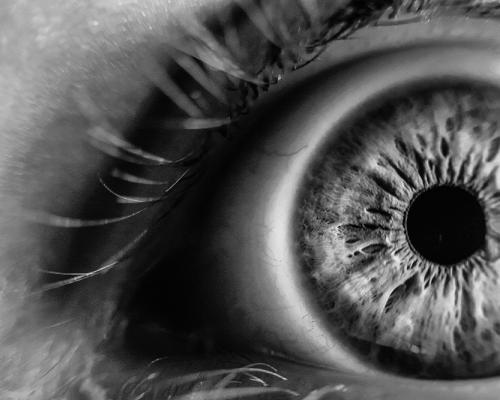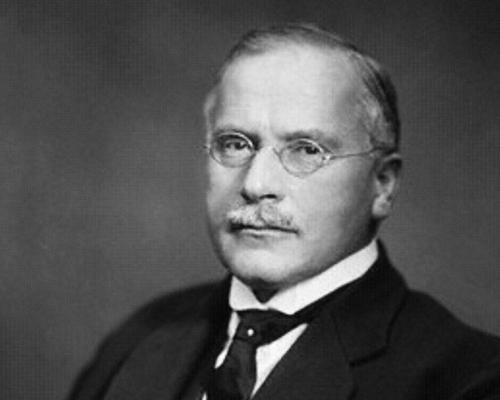The road to recovery
Ian Caldwell describes how the human givens approach to helping people in distress has had a huge impact on mental health services in Hartlepool.
HARTLEPOOL Mind is unrecognisable today from the organisation that it was when I started working for it two years ago. Like other Mind local associations (the voluntary groups around the country coordinated by the national mental health charity Mind), it offered 'tea and sympathy' to a hard core of 30 or 40 people with severe, enduring mental illness.
People could attend 'drop-in' centres where usually they would spend their day drinking tea and coffee and smoking. Sometimes crafts or music or drama teachers would be brought in to offer them classes. Sometimes they would go on outings as a group. Users of the drop-in centre either turned up or they didn't. They never initiated activities of their own, and nothing noticeably ever changed. Today Hartlepool Mind is a dynamic place, helping 500 people a year to discover or recover a meaningful and satisfying life.
When I joined the organisation, the chair and the manager of Hartlepool Mind had been attending Human Givens seminars for over a year and were itching to offer clients a completely different kind of service, based on the human givens approach of identifying and meeting needs and best use of innate resources. Together they had put together a bid for money from the Government's "New Deal for Communities", a regeneration package for the most deprived areas in the country, and won the funds to start up a brand-new project — a mental health support network.
The 'new deal' covers five areas: employment, housing, education, antisocial behaviour and crime, and health. Our funding was earmarked for the mental health component, but we planned to address them all. In the holistic human givens approach, successful treatment for depression may involve helping people build up the skills and confidence that will prepare them for employment or college, or enable them to challenge difficulties such as unsatisfactory housing. Divisions between 'areas' are just artificial and hampering.
Although we still carried on providing Hartlepool Mind's traditional information services to the public about mental health matters and signposting them, as appropriate, to other agencies, the drop-in centre had its doors finally and firmly closed. We concentrated our energies on tackling mental health issues in a non-stigmatising way that people would be drawn to instead of shy away from. We went to talk to residents' associations and community groups about stress management sessions and assertiveness training opportunities and set up advertising and poster campaigns.
By this time, we had also won 'new deal' money for a complementary therapies project, so we organised joint complementary therapy and mental health 'days' in community centres, sports centres and church halls in our targeted area. Many people were curious enough to come along, and we invited them to attend our centre for a variety of complementary therapies (from acupuncture to Indian head massage) or to discuss practical or personal problems they were struggling with.
Although Mind's remit is to work with people with severe and enduring mental illness, we opened up access to anyone who wanted it. As we know, countless people suffer lifetimes of stress and distress but aren't formally 'diagnosed' with a problem. Others who are diagnosed with chronic psychiatric conditions might well have got their lives back on track, had meaningful intervention been available to them at the outset.
Our centre is based in a one-storey building, which comprises offices, a relaxation room, training room and therapy rooms. The atmosphere is friendly, informal and relaxed and clients can always be assured of a warm welcome. We employ five full-time workers — a manager, a support network coordinator (my role), a complementary therapy co-ordinator, a senior recovery support worker and an administrator — and three part-time clerical workers. All of them are required to attend a few Human Givens seminars, so that they understand the human givens approach — after all, it is the clerical staff who are the first to meet a patient. We also employ sessional workers, including therapists.
Some of the therapists are taking the human givens diploma course and all have attended Human Givens workshops on practical ways to shift anxiety and depression, and deal with anger and addictions etc.
All have to agree to meet the human givens' guidelines for effective counselling.
The recovery model
All staff work from one model only. We call it the recovery model. Recovery is defined as living well with or without symptoms. We view recovery as a journey, a movement from the place a person is in to places that are better to be in, learning and making use of new skills and understandings along the way. This recovery model is multi-dimensional (holistic), taking into account an individual's diet, nutrition, medication, environment, social network and so forth. This is a very different experience for clients who may previously have been shunted from one statutory service to another, where markedly different models are in use.
The NHS, unsurprisingly, relies heavily on the medical model for mental ill health. According to this view, the disturbance or dysfunction is rooted in the body, and taking the right medication can cure or contain it. According to recent figures, 91.3 per cent of psychiatrists adhere to the medical model, as do 60.8 per cent of nurses and 47.5 per cent of social workers [1].
More social workers operate from the social model, emphasising the role of family and environment. Psychologists are increasingly convinced by the cognitive model — changing unhelpful thoughts helps eradicate inappropriate emotional reactions and undesired behavioural responses. Counsellors at GP surgeries, meanwhile, tend to favour the psychotherapeutic model, particularly the active listening, Rogerian kind.
In my experience, from talking and working with clients, these models provide convenient 'get out' clauses for professionals, when a particular approach doesn't appear to have anything more to offer. So the psychiatrist who reaches the limitations of the medical model refers on to the social worker, and so forth. Clients take away the perception that it is they who are falling short, not the model. And so they do the rounds of the different agencies.
The recovery model, however, takes an overall look at people's needs and asks how we can help, whatever that entails. It could mean addressing matters such as diet, sleep problems, emotional difficulties, troublesome neighbours, unhealthy housing or side effects of medication that are interfering with quality of life. In emergencies, we act on the spot.
"What's the point in going on?"
When Ben walked in off the street, he was suicidal. A young man in his mid to late 20s, he had been 'on the sick' for some while because of depression. He rarely went out or communicated with anyone, and had spent the last few months brooding in his house. That in turn had led his relationship to break down and now he was homeless, because his wife had thrown him out. He arrived at our centre in a highly agitated state and kept saying, "What's the point in going on?" He clearly needed immediate help.
First I calmed him down by teaching him the 7/11 breathing technique (breathing in to the count of 7 and out to the count of 11, which automatically slows breathing and reduces panic and anxiety levels). By giving him a simple but powerful skill he could use straight away, he was able to take back charge over a small piece of his life, which seemed to him to have spiralled out of control completely.
When eventually he was calm and able to engage with me, instead of being overloaded with emotion, we were able to talk about what was lacking in his life and what needs were not being met. Clearly, housing was at the top of the list and I contacted a housing officer and arranged to take Ben to see him later that day. We also ascertained that he could stay with a friend for a short while, until his housing needs were sorted out. This reduced his anxiety further.
In talking with him it became apparent that his depression had been triggered by stress at work and low confidence in himself. He blamed himself for not being up to the job and then for getting depressed over it and causing the end of his relationship. We didn't dwell on his past but he mentioned that he had always been passive and hated confrontation. I was able to explain to him how stress affects the body and emotional arousal leads to black and white thinking, when everything seems so much more hopeless than it really is.
He responded positively to the information that depression wasn't a part of his character: it was something outside of himself that he wasn't to blame for but that he did need to take responsibility for shifting. One aspect of doing that, I told him, was through connection with people, instead of hiding away, as we need to be connected with others to be emotionally healthy. We covered this ground quite quickly but I didn't let him leave the centre until I was confident that he felt hopeful that change could occur and that he would return, as arranged, next day.
Over the next two weeks Ben had two sessions with a human givens therapist, during which she discovered that he found arguments with his wife excruciatingly painful and would withdraw rather than risk them — leaving a lot of unresolved issues within the relationship.
The therapist used the rewind technique [2] to take the traumatising emotion out of the memory of major rows, and guided imagery to help him visualise successfully engaging in discussion with his wife, to address differences in needs or opinions. He attended workshop sessions to learn new skills and strategies for managing stress, communicating in relationships, building self-esteem, being more assertive and countering depressive thinking by challenging negative thoughts, etc.
During those two weeks, Ben went to visit his wife and, as he put it, talked to her as he had never talked to her before. He also went to see his employers to say that he would like to come back to work. The end result was that, at the end of two weeks, when he was offered a flat by the housing department, he turned it down because he had returned to live with his wife. He was also back at work, with a new belief in his abilities and strengths, and felt positive about the future.
Getting back on track
I believe that part of our project's success is due to the fact that we are confident about what we offer. We say, "This isn't going to be long term. We'll probably see you a few times, and that will be all the help you need." This is surprising, to say the least, to some clients who have had many years of mental health service intervention.
One such person we worked with was Linda, a young woman in her mid-20s, who had been diagnosed as suffering from schizophrenia.
She heard 15 different voices, all of people who appeared to be monitoring her life and giving her instructions on how she ought to be living it. At the time that we met her, she had been hospitalised a few times but was currently living with her young daughter at her mother's home. There she would be visited every week by a member of a dedicated psychosis team, attached to the local psychiatric hospital, and she was also receiving monthly visits from a cognitive-behaviour therapist. Linda's mother acted, in effect, as the mother of Linda's six-year-old daughter Molly, even taking her to and from school, and also took care of all of Linda's physical needs. Linda perceived her as controlling.
When Linda was brought in to see us, having been referred by the psychosis team, she had no expression on her face at all and was silent unless spoken to. Even then, there was at least a six-second delay before she replied, as if she was slowly processing what had been said. She was on quite heavy medication. The therapist to whom I assigned Linda's case quickly established that Linda's wish was to be able to be more of a mother to Molly. Instead, she spent most of her time alone, worrying about her shortcomings and listening to the voices, but unable to motivate herself to get up and do anything different.
The therapist suggested that Linda set an alarm clock for 8am and put it across the other side of the room from her bed, so that she would have to get out of bed to turn it off. This Linda agreed to do. Once up, she was able to help her mother prepare Molly for school and make decisions about what Molly would wear or take in her packed lunched. Quite quickly she got into the routine of getting up early, making the packed lunch, taking Molly to school and collecting her as well.
Taking back responsibility
Over a six-month period, she attended sessions with the human givens therapist (she abandoned the cognitive therapy) and also our workshops that show how to build social networks, starting with the importance of skills such as small talk and progressing through to the need for employable skills to gain entry to the world of work.
Gradually, Linda established structure to her life. She responded to the suggestion that she might try a hobby to fill time constructively during the day, and started knitting. She soon decided that was unsatisfying and not what she wanted to spend her time doing, but in the process had become clearer about what she did want to do. She wanted to be able to take back full responsibility for Molly. She started taking driving lessons. On request, the council provided her with a home of her own for herself and Molly, and she busied herself with decorating it. The voices began to disappear, as she was too busy to hear them, and she was spending less and less time with her overly directive mother.
At the centre, we saw that the emotion had come back into her face. She would smile, show empathy and respond instantly to questions. Although we had never discussed her medication with her, she told us she had been taking six different anti-psychotic and antidepressant drugs, and she had now reduced down to one. She said to us, in relief, "I feel like I've woken up."
Linda's psychiatrist was so struck by the change in her that he started to refer us more clients, telling them that medication couldn't solve everything!
The mental health continuum
Hartlepool Mind has the philosophy that all mental wellbeing exists on a continuum, from good mental health to ill mental health. So everything from stress to psychosis is on the same continuum, which is fluid. Everyone moves up or down, according to what is happening in their lives at the time and how equipped they are to cope with it.
Diagnoses of psychosis are of little value because someone who is diagnosed as manic depressive at one point is quite likely to be diagnosed as schizophrenic at another. It is far more helpful to work to normalise all human experience and support people through the dips. Tom McAlpine, a mental health specialist from Moodswings Network, based in Manchester, has been vital in assisting Hartlepool Mind in working with this philosophy.
Reality processed through the dreaming brain
The human givens idea that psychosis is reality processed through the dreaming brain also makes a lot of sense to me and can be helpful to use in explanation when talking to people who are having experiences that they realise are out of 'sync' with those of people around them. One young woman named Sian described how, during a manic period, she had been watching a science fiction drama on television and became obsessed with the possibilities of time travel. She started talking excitedly about it to friends and family.
"Part of me could see that people weren't as excited about the idea as I was and that what I was saying didn't make any sense to them. That part of me could see that I was being over the top and yet I just couldn't stop myself," she said. She felt comforted by the possibility that, when susceptible individuals are highly over-stressed, dreaming 'reality' can leak into waking reality.
Just as in a dream we sometimes realise that something we are doing is odd or shouldn't be possible, yet can't help but carry on regardless, so, in an overwrought state, the same experience can occur while awake. By discussing ways that she could lower her stress and thus reduce such occurrences, she ceased to feel so out of control and frightened.
Retreating into the imagination
When people experience ongoing emotionally painful or fear-inducing events that they have no control over, they often retreat into their imaginations to protect themselves. It makes sense to think that a pathological amount of such daydreaming (a REM state trance, just as dreaming is) could tip people into psychosis, if their emotional needs are not being met, as a counterbalance.
Nathan, a man in his late 20s, was brought to see me while he was still an inpatient at University Hospital in Hartlepool. (The staff often bring us patients, so that we can become acquainted with them before discharge, when our role is to help them settle back into the community.) Nathan shook constantly and was clearly extremely stressed. He had started to believe that people might be in his home or were coming to look for him, and gradually became able to 'see' these imagined people. This experience disturbed him very much but he hadn't told the nurses, as his parents, with whom he still lived, were putting him under pressure to make a swift recovery and return to work. He was also distressed by certain bodily changes, such as heavy sweating and having a metallic taste in his mouth. He had started to wonder if 'they' were poisoning his food. I discovered that he had debts that he couldn't pay off. He felt pressured by his parents to make something of himself and to do well at an office job he disliked.
Nathan was seeing a cognitive therapist, who was working to help him change negative thoughts and attitudes. It seemed to me, however, that what he needed most were coping skills and social connections in his life and, most immediately, to be able to make sense of the strange physical experiences he was having. During our session, he was quite clearly switching in and out of psychosis — he would frequently appear vacant and then suddenly 'come back' to us and begin talking again. I asked him if he was OK or if something else was happening, and he tentatively revealed that he thought he could see things during the night, that people were maybe coming to get him. I asked about his hearing and he looked surprised and said, 'I think I can hear people talking about me'.
When he was rational, I took the chance to tell him how stress affects the body — for instance, that metabolic changes may make the body overheat and sweat, and the rise in cortisol production may create a metallic taste in the mouth. It also wasn't so surprising that he had started to hallucinate pursuers, as his overriding concern was being pursued for debts he couldn't pay. When these experiences were normalised in this way, he ceased to fear them.
Meeting needs and reducing pressures
We talked about the need to reduce his stress and how this could be achieved. He said he wished he could have a small flat of his own in a pleasant area, away from his overbearing parents, where he could go to a gym and start to mix with people socially again. He agreed, at my suggestion, to tell nursing staff and family about his hallucinations and concerns, so that he no longer felt pressured to try to feign wellness and return to work. We also arranged an appointment for him with the local Citizens Advice Bureau, so that they could help work out how to manage his debts.
The project team found Nathan a flat with warden-controlled access. Four months down the line, Nathan is managing for himself fairly well. By setting about meeting his needs and reducing the pressures that were causing him to flip into psychosis, we were able to keep him connected to the real world. The hallucinations disappeared very quickly. Without such intervention, they might well have intensified and left Nathan disabled for a lifetime.
Working with people who self harm
The practical needs-led approach we have adopted has given me more confidence in working with people who self harm. For very many people who self harm, emotional distress is a physical experience, and they may cut to prove to themselves that they feel nothing or to bring themselves back from a dissociated state. It is instinctive to want to encourage people to stop injuring themselves but usually counter-productive.
When 22-year-old Chrissie came to the centre, she had been cutting herself for three years. It was difficult to build rapport with Chrissie. She found it hard to articulate her emotions or, more basically, even to distinguish between emotions, both in herself and others. To her, emotions felt either good or bad, and that was very limiting.
I at no time asked her to stop harming herself, telling her I respected that that was her private world. One of the centre workers took Chrissie to a cafe where they sat and observed the expressions on customers' faces. If any people didn't look happy, Chrissie routinely catastrophised, imagining that they felt suicidal and might be thinking of going home to kill themselves.
So we agreed that she needed to develop an understanding that emotions could be subtle, and how to identify them so that she could relate more easily to others. We encouraged her to mix more with others, at adult education courses, skills development workshops and, finally, by volunteering at the local hospital, so that she had more opportunities to engage with and talk to people and see whether her reading of situations was accurate or needed adjustment.
After four months, with the ongoing help of her recovery support worker, Chrissie had considerably enhanced her social skills and had developed, and continues to maintain, her own social network, which enables her needs to be met. She has not cut herself for some time.
Mood Management
Many of our clients join our mood management programme, which helps people to identify the symptoms that may precede a lurch into mania or a dip into depression. These vary from individual to individual, and may be very small. For instance, overly dry or greasy hair or dry or prickling skin or racing thoughts or not wanting to sleep may be a first sign of incipient mania for some.
Identifying the tell-tale signs enables a person to nip the problem in the bud to resist the urge to go partying or to drink or to start a relationship with a person met at the bus stop and to look at what is actually distressing them (such as a too-pressured work schedule or a relationship difficulty), and do something to redress the balance, such as taking time out or talking with the partner or a friend. Similarly, a first sign of oncoming depression might be a desire to withdraw from company or to stay late in bed.
A strategy to deal with it might include deliberately socialising and keeping to scheduled activities and ensuring sufficient but not excess sleep. In two years, we have gone from strength to strength. Clients tell us they are extremely satisfied with our service, finding us warm, encouraging and optimistic. We ourselves are enthusiastic about going to work each day, and helping people to move on and make their lives work again. Other professionals who work with us on an occasional basis say they feel energised by our sessions. They love having the chance to work with us because it is so clear that we love what we do.
We now have additional funding, which enables us to cover more than the 'new deal' area of Hartlepool although, unfortunately, we still cannot cover it all. The local hospitals, primary care trust and social service department all refer us a lot of clients. In fact, incredibly, we provide more therapy than any other local service, statutory or voluntary (for instance, GP practices, practitioner nurse services, counsellors and the local health authority).
We would like to be commissioned to provide a mental health service for the whole town, and now we don't think that is an idle dream. We have a joined-up approach and we have shown that it works.
All names in this article have been changed.
This article first appeared in "Human Givens Journal" Volume 11 - No. 1: 2004
 Spread the word – each issue of the Journal is jam-packed with thought-provoking articles, interviews, case histories, news, research findings, book reviews and more. The journal takes no advertising at all, in order to maintain its editorial independence.
Spread the word – each issue of the Journal is jam-packed with thought-provoking articles, interviews, case histories, news, research findings, book reviews and more. The journal takes no advertising at all, in order to maintain its editorial independence.
To survive, however, it needs new readers and subscribers – if you find the articles, case histories and interviews on this website helpful, and would like to support the human givens approach – please take out a subscription or buy a back issue today.
References
- Colombo, T, Fulford, B, Bedelow, G and Williams, S (2004). Model Behaviour. OpenMind Jan/Feb, Page 10
- See Griffin, J and Tyrrell, I (2001) The Shackled brain: how to release locked-in patterns of trauma. HG Publishing, East Sussex
Latest Tweets:
Tweets by humangivensLatest News:
SCoPEd - latest update
The six SCoPEd partners have published their latest update on the important work currently underway with regards to the SCoPEd framework implementation, governance and impact assessment.
Date posted: 14/02/2024
2024 Conference
Our next in-person HGI Conference, is being held on the weekend of 20th and 21st April 2024














